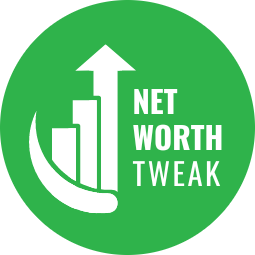When to Consider a Price Drop: Signs Your Home Isn’t Selling
Key Takeaways
- Prolonged time on the market and a lack of offers often signal it’s time to reconsider your price.
- Buyer and agent feedback, as well as comparing your listing against similar homes, provide critical insights.
- External factors like shifting market conditions and rising mortgage rates affect buyer demand and your home’s selling potential.
- Making timely adjustments can boost visibility and help you sell faster and for the best price possible.
Table of Contents
- Prolonged Time on the Market
- Low Viewing Rates
- Lack of Offers or Lowball Offers
- Feedback Indicates Overpricing
- Comparable Homes Are Selling Faster
- Market Conditions Have Shifted
- High Mortgage Rates Affecting Buyer Demand
- Negative Feedback on Home Condition
- Final Thoughts
Prolonged Time on the Market
When your house lingers on the market beyond the average time typical for your area, it often points to an issue, with price being the most common culprit. According to studies by the National Association of Realtors, homes unsold after a month often end up selling for less than initially expected. Acting proactively can save you time and help preserve your home’s value.
If you are looking for a quick solution or want to connect with a reputable buyer, making strategic price adjustments early can attract renewed buyer interest and prevent your listing from becoming stale.
Low Viewing Rates
When your home doesn’t attract many showings or online views, buyers likely perceive it as overpriced compared to similar listings. Interest tends to peak within the first two weeks of going live, so a drop-off afterward means you may need to rethink your asking price. Refreshing your price can boost your property to the top of search lists, where more buyers will see it and consider scheduling a tour.
Lack of exposure is a significant barrier to selling, making it essential to carefully monitor showing activity and digital engagement. If your home is invisible to buyers, it doesn’t matter how attractive your listing photos or features are.
For additional guidance, consulting trusted local professionals like home experts can give you a competitive edge and actionable advice based on current trends in your area.
Lack of Offers or Lowball Offers
Another warning sign is when your property sits without offers, or the only ones you receive are far below the asking price. This happens when buyers compare your home’s features and price to others and determine they can find better value elsewhere. Realtor.com says a continued absence of offers is a red flag for price misalignment rather than just bad luck or timing.
How to Respond
Analyze feedback, review comparable homes that have recently sold, and decide whether updating your price could attract serious buyers. Even a modest price drop can make a significant difference in generating fresh offers.
Feedback Indicates Overpricing
Most real estate agents will share feedback from showings, so listening carefully is crucial. If multiple parties consistently mention price as an issue—directly to you or via their agents—this signals your home is positioned too high compared to similar properties. Try to view your property from a buyer’s perspective: honesty from visitors is a valuable source of insight.
Comparable Homes Are Selling Faster
If similar homes in your neighborhood are selling quickly, but yours remains unsold, it’s time to analyze recent sales data. Pay attention to list prices, closing prices, and unique features like updates or renovations. Your agent or a pricing tool can help identify if you’re overreaching.
Market Conditions Have Shifted
Economic changes, new lending regulations, and seasonal patterns influence the real estate market. For example, a slow market due to rising interest rates or local job losses makes competitive pricing even more critical. Remaining flexible by following current trends helps sellers align with buyer expectations and avoid chasing the market downward.
High Mortgage Rates Affecting Buyer Demand
Skyrocketing mortgage rates can shrink the pool of qualified buyers, making it harder for homes at the higher end of value to sell. This is especially true if buyers are stretching for affordability. When this happens, sellers often need to acknowledge the new reality and adjust prices accordingly to stimulate demand.
Major publications like The New York Times explain how increased rates press sellers and buyers to reset expectations, often necessitating price drops to stay competitive.
Negative Feedback on Home Condition
It’s not always just about price—condition counts, too. Continuous negative remarks about required repairs, outdated appliances, or curb appeal issues mean you must reiterate your strategy. Consider investing in updates or repairs or modifying your price to reflect the home’s current state, making it a more attractive prospect for buyers surveying your listing alongside others.
Final Thoughts
Selling your home can feel daunting, especially when it doesn’t go as planned. By carefully watching how long your home sits, what feedback you get, and what’s happening with market conditions, you’ll recognize when a price drop is the best step forward. Making a timely, well-informed price adjustment can reignite buyer interest and set you up for a successful sale—even in a changing market.







